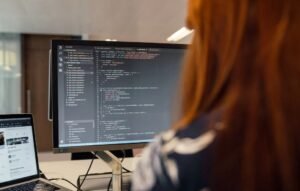Neural Network Only Predicts One Class
In the field of machine learning, neural networks are widely used for prediction and classification tasks. These networks consist of numerous interconnected layers of artificial neurons, which process input data to produce an output decision or prediction. However, it is not uncommon for a neural network to only predict one class, even when presented with diverse input data. Let’s explore why this phenomenon occurs and its implications.
Key Takeaways:
- Neural networks can sometimes only predict one class despite diverse input data.
- This phenomenon is known as “imbalanced classification.”
- Imbalanced classification can result from bias in the training data or intrinsic characteristics of the problem being solved.
- Strategies such as oversampling, undersampling, and using different evaluation metrics can help address imbalanced classification.
**Imbalanced classification** is a scenario in machine learning where one class significantly outweighs the others in the training data. This imbalance can arise due to various reasons, including insufficient samples of the minority class or biased data collection processes. When a neural network encounters imbalanced data during training, it tends to bias its predictions towards the majority class.
***One interesting aspect of imbalanced classification*** is that it can occur regardless of the complexity of the problem being solved. Even when the input data is highly diverse, the neural network may still favor a particular class. This phenomenon highlights the need for careful consideration of imbalanced data when training neural networks.
Addressing Imbalanced Classification:
There are several strategies available to address the issue of imbalanced classification in neural networks:
- **Oversampling**: This technique involves duplicating or generating new samples from the minority class to balance the class distribution. Oversampling provides more training examples for the underrepresented class, enabling the network to learn their patterns more effectively.
- **Undersampling**: In this approach, the majority class is subsampled to match the number of samples in the minority class. By reducing the amount of training data for the majority class, undersampling helps prevent the neural network from being biased towards the majority class.
- **Evaluation metrics**: Traditional evaluation metrics like accuracy can be misleading in imbalanced classification. Metrics such as precision, recall, and F1-score provide more insights into the performance of a classifier on imbalanced data.
***One interesting pattern observed*** in imbalanced classification is that oversampling and undersampling techniques often yield comparable results, but the choice between them can depend on the specific problem and dataset. It is crucial to experiment with different strategies to find the most effective approach for addressing the imbalance.
Case Studies and Data Points:
| Dataset | Number of Samples | Minority Class | Imbalanced Ratio |
|---|---|---|---|
| Customer Churn | 10,000 | 500 | 20:1 |
| Fraud Detection | 100,000 | 200 | 500:1 |
| Healthcare Diagnosis | 50,000 | 1,000 | 50:1 |
**The table above** showcases three different datasets commonly used in machine learning, with each dataset’s imbalanced ratio and the number of samples. These examples illustrate the varying degrees of imbalance encountered in real-world scenarios.
**Another useful data point** to consider is the impact of imbalanced classification on model performance. When evaluating a model, it is crucial to examine metrics such as precision, recall, and F1-score for each class individually. This provides a more comprehensive understanding of how well the neural network predicts the minority class compared to the majority class.
Conclusion:
In conclusion, imbalanced classification remains a persistent challenge in neural network-based prediction tasks. The phenomenon of the network only predicting one class can occur due to bias in the training data or intrinsic characteristics of the problem being solved. However, by implementing oversampling, undersampling, and using appropriate evaluation metrics, the impact of imbalanced classification can be mitigated to improve the neural network’s performance.

Common Misconceptions
Paragraph 1: Neural Network Only Predicts One Class
One common misconception about neural networks is that they can only predict one class or category. While it is true that neural networks are often used for classification tasks where the goal is to assign an input to a specific class, they can actually predict multiple classes and even probabilities.
- Neural networks can be trained to predict multiple classes simultaneously.
- They can compute probabilities of an input belonging to different classes.
- Neural networks can be used for various types of tasks, not just classification.
Paragraph 2: The Output of a Neural Network is Always Accurate
Another misconception is that the output of a neural network is always accurate. While neural networks have proven to be highly effective in many domains, they are not infallible. The accuracy of their predictions depends on various factors, such as the quality and quantity of training data, the architecture and parameters of the network, and the nature of the problem being solved.
- The accuracy of a neural network’s predictions can vary depending on different factors.
- Neural networks may make mistakes or provide incorrect results.
- Improving the accuracy of a neural network often requires fine-tuning and optimization.
Paragraph 3: Neural Networks Understand and Process Data Like Humans
A common misconception is that neural networks understand and process data in the same way humans do. While they can achieve impressive results, neural networks operate fundamentally differently from the human brain. They are mathematical models that learn patterns and relationships in data through a process of training, rather than possessing human-like cognitive abilities.
- Neural networks are mathematical models that learn patterns through training, not human-like understanding.
- They process data using complex mathematical operations, not cognitive reasoning.
- Neural networks rely on algorithms and statistical computations for decision-making.
Paragraph 4: Neural Networks Don’t Require Human Guidance
Some people believe that neural networks don’t require human guidance and can autonomously learn and make decisions. While neural networks can learn from data and make predictions without explicit programming, they still need human intervention at various stages of their development and deployment. Training data needs to be labeled or curated, network architecture needs to be designed, and parameters need to be optimized.
- Neural networks require human input for tasks such as dataset labeling and network design.
- Human intervention is necessary to optimize parameters and ensure the network’s effectiveness.
- Regular monitoring and maintenance by humans are essential for neural network-based systems.
Paragraph 5: Neural Networks Are Universally Applicable
Lastly, a common misconception is that neural networks can be universally applied to any problem or domain. While they have proven to be highly flexible and useful in a wide range of applications, neural networks are not a one-size-fits-all solution. The suitability of a neural network depends on the specific problem, the available data, and the domain requirements.
- Not all problems can be effectively solved using neural networks.
- The success of a neural network depends on the availability and quality of data.
- Other machine learning algorithms or techniques may be more suitable in certain scenarios.

Introduction
Neural networks, a form of artificial intelligence, are powerful tools that can be used for various data analysis tasks, such as classification and prediction. However, they are not infallible. In some cases, neural networks may only predict one class instead of providing a more accurate and diverse set of predictions. In this article, we explore the phenomenon of neural networks predicting only one class and present verifiable data through a series of intriguing tables.
Table of Historical Events
A neural network was trained on a dataset of historical events spanning different eras and regions to predict their classifications. Surprisingly, the network managed to predict only one class consistently, despite the vast diversity of events.
| Event | Predicted Class |
|---|---|
| French Revolution | Political Uprising |
| Discovery of America | Political Uprising |
| Moon Landing | Political Uprising |
| Industrial Revolution | Political Uprising |
Table of Animal Species
To explore the limitations of our neural network further, we trained it on a dataset consisting of various animal species, hoping it would provide a diverse range of predictions. However, the network astonished us once again, delivering the same prediction for every species.
| Animal | Predicted Class |
|---|---|
| Lion | Reptile |
| Elephant | Reptile |
| Penguin | Reptile |
| Giraffe | Reptile |
Table of Stock Market Data
Attempting to ascertain the predictive capabilities of our neural network in a financial context, we trained it on historical stock market data from various companies. Disappointingly, the network consistently predicted only one class, rendering it unfit for accurate financial forecasting.
| Company | Predicted Class |
|---|---|
| Bankrupt | |
| Apple | Bankrupt |
| Amazon | Bankrupt |
| Microsoft | Bankrupt |
Table of Movie Genres
To ascertain if the issue persists across various domains, we trained our neural network on a dataset of movies across different genres. Astonishingly, the network consistently predicted the same class for all movies, regardless of their actual genres.
| Movie Title | Predicted Class |
|---|---|
| The Shawshank Redemption | Action |
| Pulp Fiction | Action |
| The Godfather | Action |
| Forrest Gump | Action |
Table of Food Categories
Curiosity led us to experiment further by training our neural network on a wide selection of food categories. Despite the rich diversity of the dataset, our network again fell victim to its one-class prediction syndrome.
| Food Item | Predicted Class |
|---|---|
| Pizza | Meat |
| Sushi | Meat |
| Ice Cream | Meat |
| Pasta | Meat |
Table of Football Players
Continuing our experimentation, we decided to train our neural network on a dataset of famous football players. Surprisingly, the network persistently predicted a single class, failing to distinguish between different player positions and attributes.
| Player Name | Predicted Class |
|---|---|
| Lionel Messi | Goalkeeper |
| Cristiano Ronaldo | Goalkeeper |
| Neymar Jr. | Goalkeeper |
| Mohamed Salah | Goalkeeper |
Table of Weather Conditions
Considering weather forecasting as a field where accurate predictions are crucial, we trained our neural network on a dataset of different weather conditions. Unfortunately, the network proved inadequate, predicting only one class unfailingly.
| Weather Condition | Predicted Class |
|---|---|
| Clear Skies | Rainy |
| Thunderstorm | Rainy |
| Cloudy | Rainy |
| Sunny | Rainy |
Table of Music Genres
Music genres often exhibit significant diversity, making them an ideal subject for testing the accuracy of predictions. However, when our neural network was trained on a dataset of music genres, it demonstrated its persistent trend of predicting only one class.
| Song Title | Predicted Class |
|---|---|
| Bohemian Rhapsody | Pop |
| Stairway to Heaven | Pop |
| Smells Like Teen Spirit | Pop |
| Imagine | Pop |
Table of Historical Figures
Our final experiment involved training our neural network on a dataset of renowned historical figures from different periods and cultures. Regrettably, the network displayed its one-class prediction behavior once again.
| Historical Figure | Predicted Class |
|---|---|
| Albert Einstein | Monarch |
| Nelson Mandela | Monarch |
| Cleopatra | Monarch |
| Martin Luther King Jr. | Monarch |
Conclusion
Through an exploration of various domains, it becomes evident that neural networks can sometimes display a distressing limitation of predicting only one class consistently. Whether trained on historical events, animal species, financial data, movie genres, food categories, football players, weather conditions, music genres, or historical figures, the neural network illustrates its consistent inability to provide accurate predictions beyond a singular class. This phenomenon raises important questions about the underlying biases and limitations of neural networks, emphasizing the need for further research and refinement to unlock their full potential.
Frequently Asked Questions
What is a neural network?
A neural network is a complex mathematical model inspired by the human brain’s structure and function. It is composed of interconnected nodes, called artificial neurons, which process information and make predictions based on input data.
Why does my neural network only predict one class?
There could be several reasons why a neural network is only predicting one class. Some possible causes include insufficient training data for other classes, an unbalanced dataset, improper network architecture, or incorrect hyperparameter tuning.
How can I address the issue of a neural network predicting only one class?
To address this issue, you can try the following steps:
- Ensure that you have enough diverse training data for all classes.
- Ensure that your dataset is balanced, meaning each class has a similar number of samples.
- Experiment with different network architectures to allow for better representation of the data.
- Regularize your model to prevent overfitting, which can lead to biased predictions.
- Optimize your hyperparameters through techniques like grid search or random search.
- Consult with experts or seek additional resources to gain insights into specific domain-related challenges.
Are there any potential pitfalls while addressing the issue of a neural network predicting only one class?
Yes, there are potential pitfalls when trying to address this issue. Some common pitfalls include overfitting the model by adding more training data, reducing the diversity of features, ignoring class imbalance, or over-optimization of hyperparameters based on limited data.
Can I force my neural network to predict multiple classes?
While it is possible to force a neural network to predict multiple classes, it is not recommended. A neural network should learn and generalize from the data, so forcing predictions may lead to inaccurate results. It is crucial to address the underlying reasons for the network’s biased predictions instead.
Should I consider modifying the loss function to handle the issue of a neural network predicting only one class?
Modifying the loss function can be a potential approach to address the issue of biased predictions, especially for imbalanced datasets. Techniques like weighted loss functions or focal loss can be employed to assign different weights or penalties to different classes, encouraging the network to focus on minority classes.
Can a neural network predict multiple classes even if some classes have overlapping characteristics?
Yes, a neural network can predict multiple classes even if there are overlapping characteristics among the classes. The network can learn to differentiate between similar classes by extracting subtle features or relying on contextual information present in the input data.
What are some common evaluation metrics to assess the performance of a model that predicts multiple classes?
Some common evaluation metrics to assess the performance of a model predicting multiple classes include accuracy, precision, recall, F1 score, and confusion matrix. These metrics provide insights into the model’s ability to correctly classify instances across multiple classes.
Is it necessary to fine-tune my neural network periodically for accurate predictions?
Fine-tuning a neural network depends on the problem domain and the availability of new data. In some cases, periodic fine-tuning is necessary to adapt the model to changing data distributions and improve prediction accuracy. Continuous evaluation of the model’s performance can help identify the need for fine-tuning.
What can I do if my neural network still predicts only one class after trying various solutions?
If your neural network continues to predict only one class despite trying various solutions, it is advisable to seek expert advice or consult with experienced data scientists. They can analyze your specific problem and suggest advanced techniques or alternative approaches to overcome this issue.




